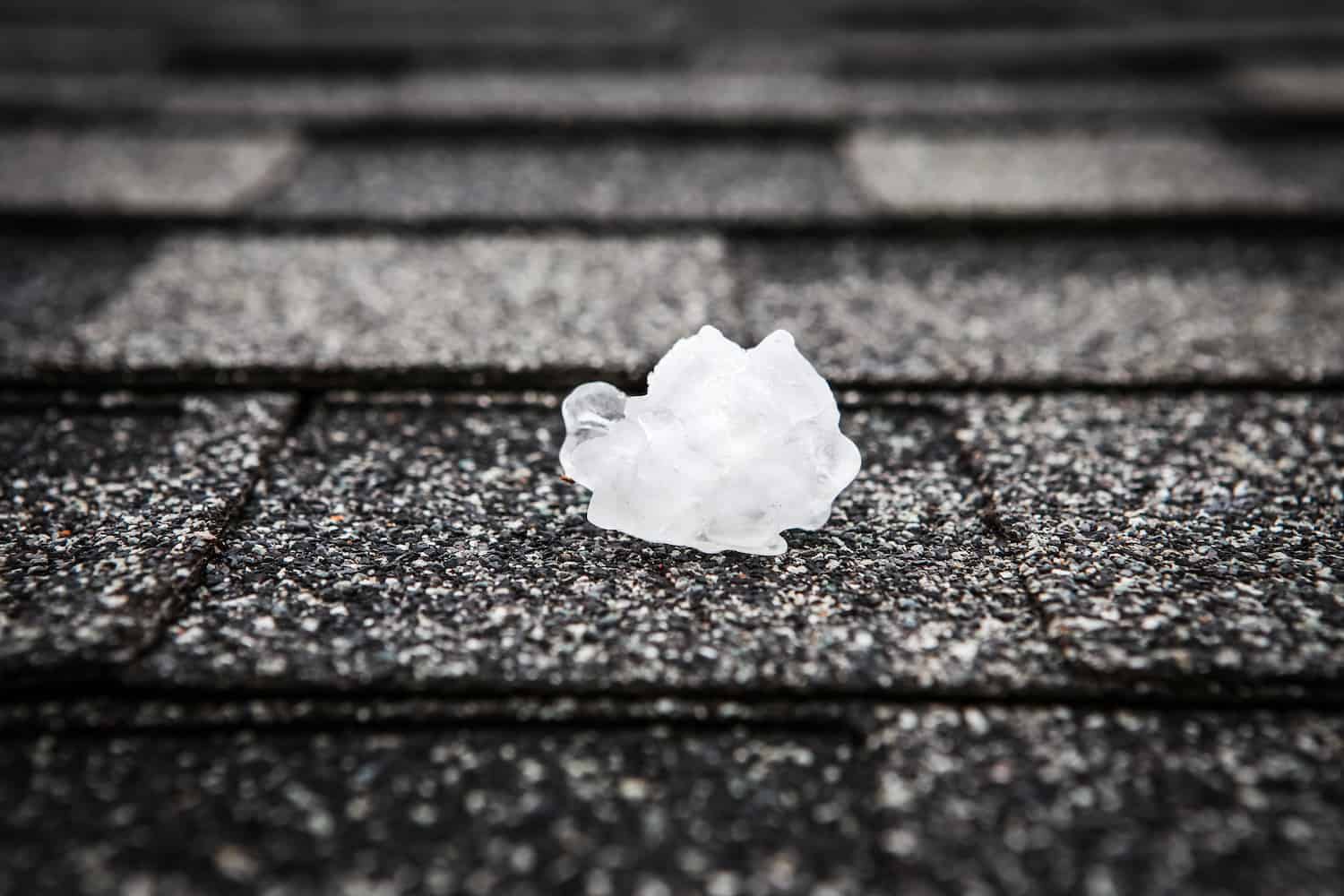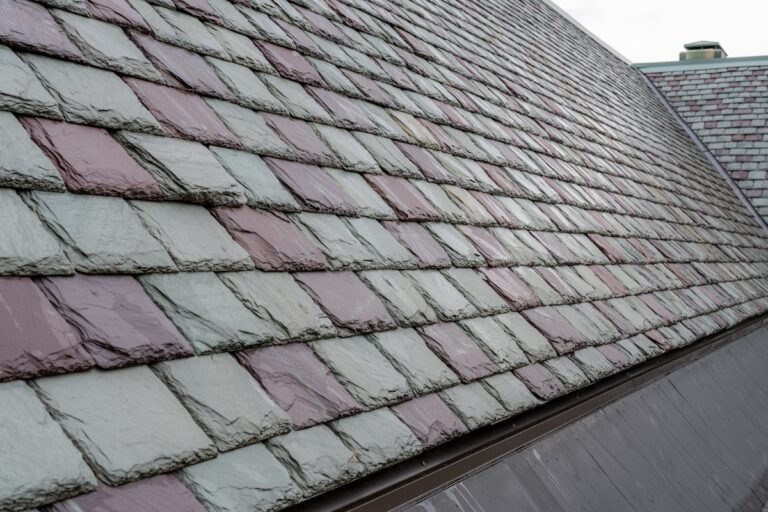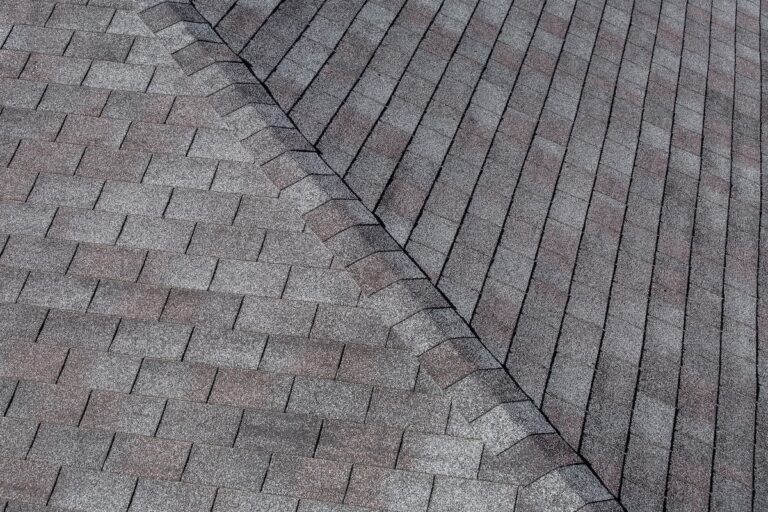It’s nice to think that our homes are built with enough strength and durability to remain immune from the harmful effects of harsh weather conditions, but that isn’t always the case. Although residential roofing, gutters, and siding systems are constructed with longevity in mind during the manufacturing process, there’s still potential for them to fail or break down from storm damage.
So how can you continue to keep your home protected from damage caused by rain, wind, hail, or other environmental impacts? It starts by being able to identify various types of roofing issues, including hail and blister damage.
And if you don’t know what either of those issues looks like, don’t worry. We’re here to help you properly identify hail damage vs blistering with this in-depth guide in order to keep your home better protected in an upcoming storm.
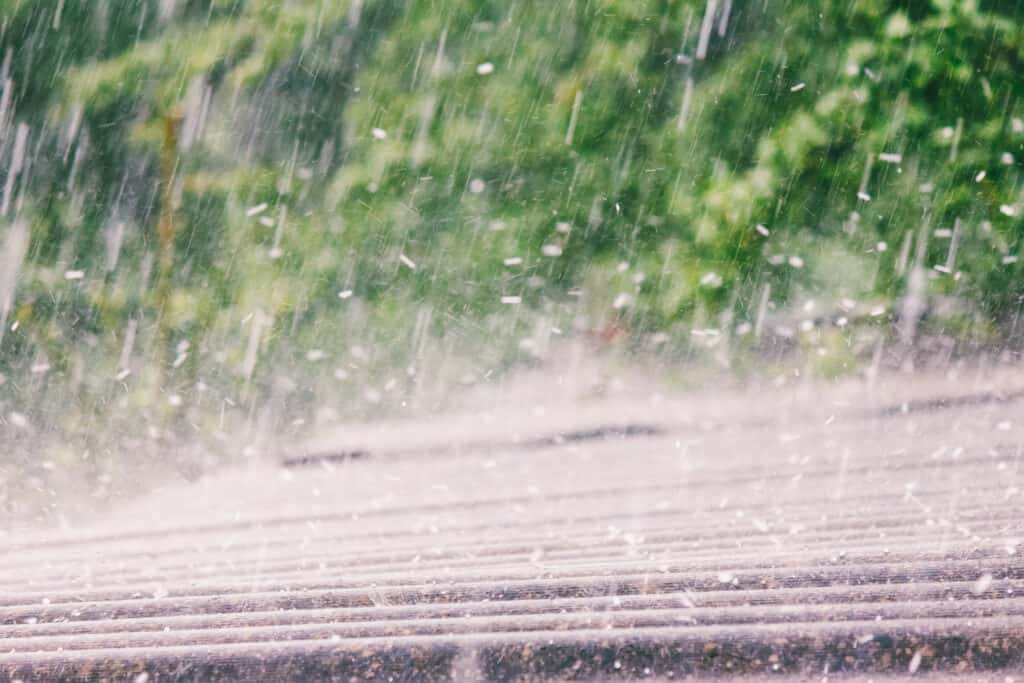
Identifying Different Types of Roof Damage 🔎
Without an untrained eye, many homeowners have difficulty distinguishing one kind of roof damage from another. But knowing what to look for when it comes to common roofing problems and potential storm damage is crucial, so you can determine whether you need a simple roof repair or a total roof replacement for your entire roof.
Inspect your roof for any apparent signs of damage as well as additional clues that might indicate underlying issues with the underside of your roof or your attic. Examples of roof damage to keep an eye out for include the following:
- Cracks and holes in shingles
- Loose or missing roof shingles
- Icicle and ice dam formation
- Leaks or trapped moisture
- Asphalt shingle blistering
- Excessive loss of shingle granules
- Shingle discoloration from being exposed to the sun
- Structural damage to your roof, siding, and gutter systems
Many of the problems above are associated with roof blistering or hail damage. But how can you tell the difference? Let’s dive in.
Hail Damage vs Blistering on Asphalt Shingles 🏚
Once you notice damage to your asphalt shingles, it’s important to work swiftly to find a solution. The most common roofing problems you’ll experience as a homeowner are shingle blistering and hail damage. Learn more about hail damage vs blistering and find the best remedies to fix both issues below:
Roof Hail Damage
Certain regions of the country are more likely to experience a hail storm than others. If you live in one of these locales, it’s crucial to know the common signs of roof damage when hail strikes.
Hail will leave small, round dents in asphalt shingles, indicating where granules have been dislodged and washed away. You won’t see any raised material around the impacted area, so it can often be tricky to spot hail damage with an untrained eye. You might need to climb up on a ladder to ensure it’s actually roof hail damage and not another underlying issue.
Hail can also affect your roof vents and flashing, so it’s vital to inspect these areas thoroughly. Identifying hail damage vs blistering can be the difference between your insurance company paying a measly deductible, having an entire replacement covered, or receiving a denied claim.
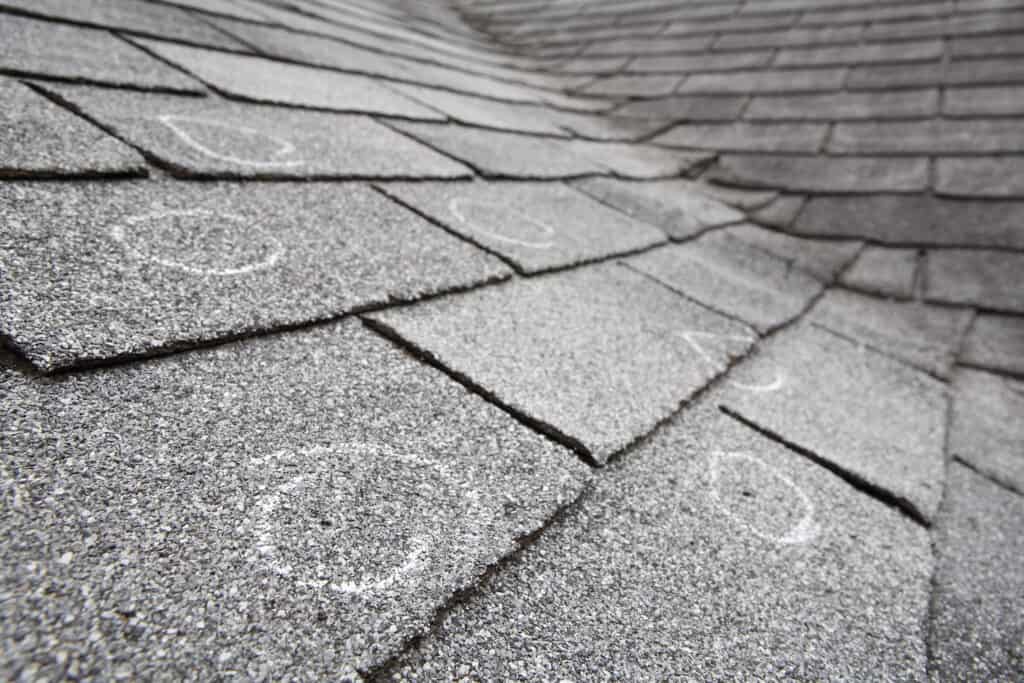
Asphalt Shingle Blisters
Shingle blisters are often mistaken for hail damage because they resemble each other visually, but there is a significant difference in the way blisters form. Unlike dented shingles caused by hail, popped blisters protrude off your roof’s surface. Each blister will pop during an extreme weather event, eventually leading to shingle granule loss, leaks, poor gutter drainage, and a drafty attic or house (i.e., energy loss).
Here are the three primary ways roof blistering occurs:
- Trapped moisture – If your shingles are installed during wet weather, or moisture gets stuck in the decking or shingles during manufacturing and installation, you could be left with a blister or two (or too many to count). This is because the sun heats the shingles and causes the penetrating water to rise to the roof’s surface in the form of a blister.
- Poor attic ventilation – Sun exposure combined with trapped heat in your attic will cause your asphalt shingles to literally boil, leading to blisters that eventually pop and discolor a portion of the shingle.
- Environmental impacts – Surprisingly, shingle blistering can also occur if too many sappy trees surround your home. The sap released by tree species such as maple, walnut, and birch can weaken the asphalt’s surface and create shingle blisters over time.
It’s important to note that, unlike hail-damaged shingles, shingle blistering won’t be covered under most homeowners insurance policies. It’s crucial to schedule a free inspection of your roof to determine the exact type of damage on it before filing an insurance claim.
Dealing With Your Damaged Roof 🛠
These issues might seem minor at first glance, but it’s important to get the repairs you need immediately to avoid any further issues in the future. The best way to combat or eliminate blisters and hail damage on your roof is to install a high-quality asphalt shingle in place of the damaged ones. That might mean repairing a few minor areas or scheduling a full replacement of your roof shingles after a storm.
After identifying any hail damage or blisters on your home’s roof, you might be tempted to tackle your roof repair alone to stay on budget. However, we don’t recommend performing DIY roof repairs for a few reasons:
- You may void your existing workmanship or product warranties
- You could make an unintentional mistake that leads to more issues
- You won’t successfully spot and repair every single dent on your roof
- You might have trouble filing a homeowners insurance claim (or getting one approved)
- Your repair job might only last a few months, while professional work will last far longer
- Roofing is an extremely dangerous job that can easily land you in the emergency room with one wrong move
- Professional roofing contractors can complete construction in days, while it might take you weeks (or more!)
We know that roof repair jobs are a significant investment, so it makes sense that homeowners often attempt to tackle these projects themselves. But putting your trust in a seasoned roofing team can eliminate those simple errors that an inexperienced home handyman might make.

Schedule Emergency Storm Repairs Today 🚨
Did you spot hail damage or blistering on your roof after a recent storm? Don’t wait until it’s too late to deal with it. Otherwise, you might be looking at a much more expensive repair. Instead, act quickly and contact Johnson Restoration to start your storm repair services right away.
When you take immediate action to mitigate the problems, you can protect your home for years. Get in touch today and work with an experienced storm damage crew you can trust.
FAQs
Is blistering a sign of poor installation?
Not necessarily. Blistering often results from trapped moisture or aging shingles, though improper ventilation can exacerbate the issue.
Can both hail damage and blistering lead to roof leaks?
Yes. Both can compromise the protective layer of the roof, leading to water infiltration and eventual leaks if not addressed promptly.
Does hail damage affect the roof’s warranty?
Most warranties don’t cover hail damage, as it’s considered an external event. Check with your manufacturer or contractor for specifics.
How can I tell if my roof has hail damage or blistering?
Hail damage often has irregularly shaped dents or fractures, while blistering looks like small, raised bubbles caused by trapped moisture or manufacturing defects.
Should I repair or replace a roof with hail damage or blistering?
The decision depends on the extent of the damage. A professional inspection can determine whether repairs are sufficient or replacement is necessary.
